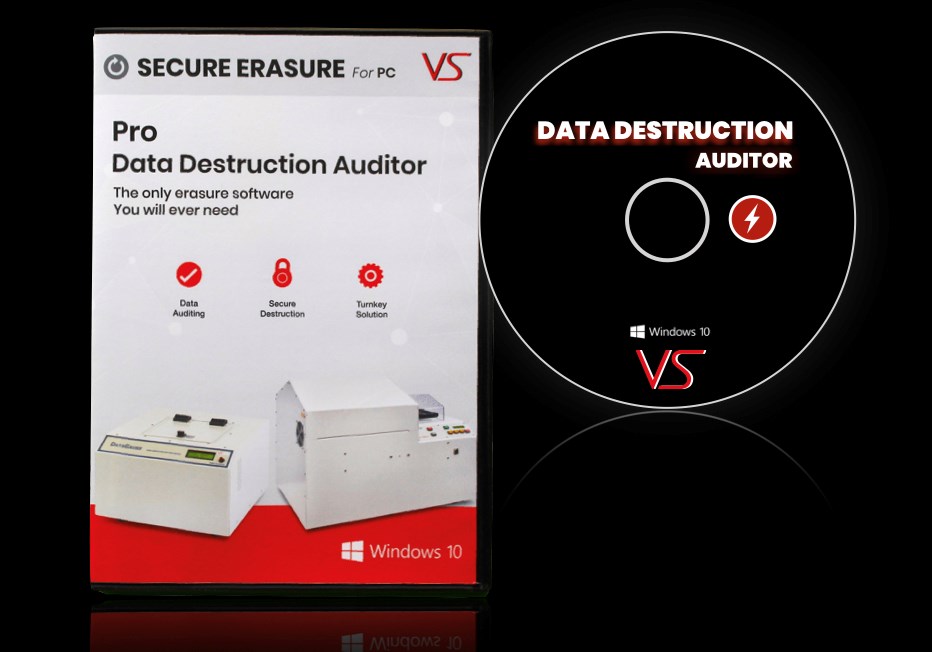Data Destruction Solutions: A Crucial Element in Your Cyber Security Technique
Data Destruction Solutions: A Crucial Element in Your Cyber Security Technique
Blog Article
Exploring the Relevance of Information Damage in the Context of Computer Security Solutions and Protecting Confidential Information
In a period where data violations are progressively typical, the significance of effective data destruction can not be overemphasized. What methods can companies implement to improve their information devastation protocols?
Understanding Data Damage
Information destruction is a crucial part of computer system security that includes the irreversible removal of data from storage tools to avoid unauthorized gain access to and prospective data breaches. In a progressively digital landscape, organizations encounter enhanced threats linked with delicate information being poorly accessed or manipulated. Reliable information devastation safeguards against these dangers, ensuring that personal dataâEUR" such as customer details, intellectual residential or commercial property, and monetary recordsâEUR" can not be recouped after disposal.
Understanding the relevance of data damage prolongs past plain compliance with regulative and lawful frameworks; it is necessary for preserving organizational integrity and trust fund. When data is incorrectly handled or inadequately destroyed, the repercussions can be extreme, including economic loss, reputational damages, and lawful obligations.

Approaches of Data Removal

One widespread technique is data wiping, which includes overwriting existing information with random patterns several times. This method provides the original information irretrievable, making it a preferred option for organizations seeking to safeguard confidential info.
One more approach is degaussing, which utilizes an effective magnetic field to interrupt the magnetic domain names on storage devices, properly removing the information. This method is particularly efficient for magnetic media but is not applicable to solid-state drives.
Physical devastation is another durable approach, squashing or including the shredding of storage space gadgets. This approach guarantees that data recovery is essentially difficult, making it suitable for very delicate info.
Last but not least, encryption can act as a corresponding strategy to data elimination. By encrypting information prior to deletion, companies can include an additional layer of safety and security, making certain that also if residues are recuperated, they stay unattainable without the decryption key. Each approach must be chosen based upon the level of data level of sensitivity and the certain safety demands of the company.
Legal Conformity and Information Safety And Security
Organizations should navigate a complicated landscape of legal requirements connected to information security, particularly after carrying out methods of data eradication. Numerous policies, such as the General Information Protection Law (GDPR) and the Health And Wellness Insurance Transportability and Responsibility Act (HIPAA), impose rigorous guidelines on how organizations must handle and get rid of of sensitive data. Failing to adhere to these guidelines can cause considerable legal consequences, consisting of considerable fines and reputational damage.
Information damage processes need to be carefully recorded to demonstrate conformity with suitable legislations and standards. This documents not only functions as evidence of adherence to legal obligations but likewise illustrates a dedication to safeguarding delicate info. Organizations should additionally establish clear policies regarding information retention and damage timelines, ensuring that information is not held longer than essential.

Furthermore, normal audits and evaluations of data destruction practices are important to maintain conformity and adjust to progressing lawful frameworks (data destruction). By proactively addressing legal demands, organizations can mitigate dangers connected with data violations and show their dedication to data safety and security. Ultimately, prioritizing lawful compliance in information devastation processes is not just a governing responsibility, but a fundamental facet of a robust data safety and security strategy
Impact on Business Reputation
The online reputation of a service can be substantially affected by its approach to information destruction and monitoring. In today's digital landscape, where data violations can occur anytime, the failure to appropriately take care of delicate details can lead to serious consequences. Organizations that improperly take care of information damage danger subjecting private client information, which not just violates privacy legislations however also wears down count on amongst customers and stakeholders.
A tarnished credibility can result in lowered client loyalty, as clients become reluctant to involve with a business that has actually shown neglect in protecting their data. Adverse promotion bordering an information breach can have an enduring result, as potential customers might be prevented by the regarded absence of protection. This can lead to a direct decline in income and market you can check here share.
In addition, businesses that prioritize data damage as component of their security technique can boost their credibility by showcasing their dedication to safeguarding sensitive details. By adopting strict data management practices, organizations can not just minimize risks however also place themselves as trustworthy entities in their particular industries, thus reinforcing their overall brand name picture.

Ideal Practices for Secure Disposal
Applying ideal methods for protected disposal of data is crucial for mitigating threats linked with information breaches and guaranteeing compliance with personal privacy regulations. Organizations should take on a detailed data disposal plan that details procedures for both physical and digital data destruction.
For physical information storage space devices, such as tough drives, shredding or degaussing is advised to prevent information healing. Additionally, companies must preserve a chain of safekeeping documentation during the disposal process, ensuring accountability and traceability of disposed things.
For electronic information, using this article software program that sticks to market criteria for data cleaning is crucial. This software program needs to overwrite existing information several times, making recovery practically difficult. It is also important to confirm the efficiency of the information damage process through audits or third-party analyses.
Educating employees on safe and secure disposal methods adds an additional layer of safety, as human error can typically result in data direct exposure. Regularly updating and assessing disposal policies guarantees positioning with progressing laws and technological developments. By carrying out these ideal practices, organizations can substantially reduce the risk of unauthorized information accessibility and improve their total data defense strategy.
Final Thought
In conclusion, information destruction is a fundamental aspect of computer security services that makes sure the defense of secret information from unauthorized gain access to. Carrying out effective techniques of data elimination, sticking to legal compliance, and identifying the impact on service reputation are vital parts of a comprehensive data safety and security method. By adopting finest practices for safe and secure disposal, companies can promote depend on with clients and guard delicate data, inevitably adding to a much more protected digital landscape.
In an era where data violations are significantly usual, the importance of effective information devastation can not be overemphasized.Information damage is an essential part of computer system security that involves the permanent elimination of data from storage space gadgets to a knockout post stop unapproved access and possible information breaches. Organizations should also establish clear policies relating to information retention and devastation timelines, ensuring that data is not held longer than needed.
By proactively resolving legal needs, companies can alleviate risks linked with information violations and demonstrate their dedication to data protection (data destruction). Eventually, focusing on legal compliance in data devastation procedures is not just a governing responsibility, but an essential aspect of a durable data protection method
Report this page